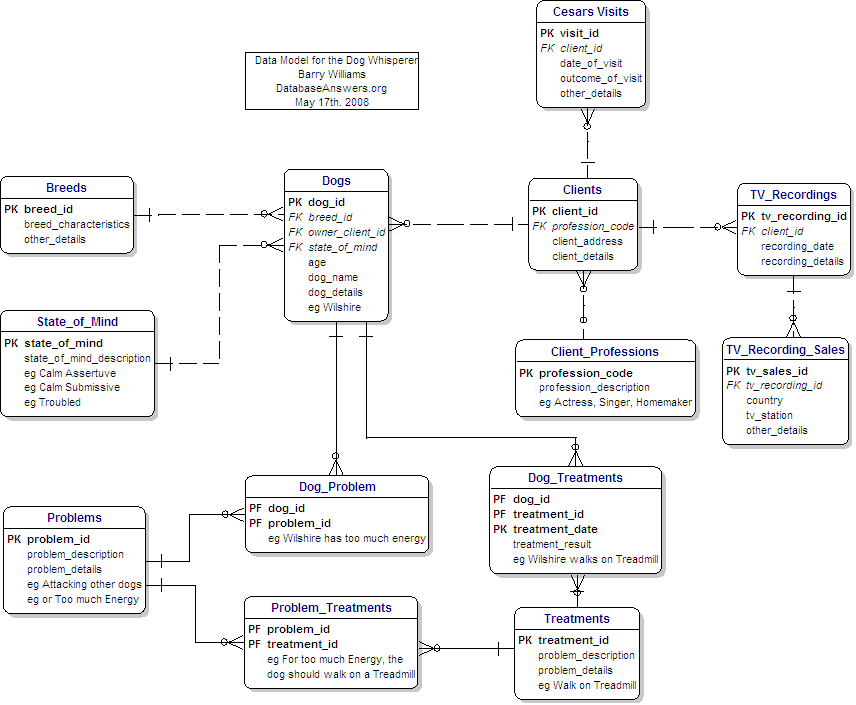
Relational databases have long been the king of data storage — but the world is now quickly turning to Artificial Intelligence querying Big Data databases.
Most Popular Databases
Today, according to a source at a top data modeling tool, the most requested databases they get asked to support are:
- Microsoft SQL Server and also Microsoft Azure SQL
- Oracle
- Snowflake
- PostgresSQL
- Databricks
- Google Big Query
Top “Big Data” NoSQL Databases
Top “Big Data” NoSQL databases include:
- MongoDB
- Cassandra
Reverse engineering of Mongo is supported by both of the leading data modeling tools: ERWin and ERStudio.
Reverse engineering a NoSQL database is typically done by ingesting the JSON/BSON.
What Is a NoSQL Database?
The MongoDB website has a good history of NoSQL databases. According to MongoDB, “Some say the term “NoSQL” stands for “non SQL” while others say it stands for “not only SQL”. Either way, most agree that NoSQL databases are databases that store data in a format other than relational tables.”
According to MongoDB, NoSQL databases are used when users have these needs:
- Fast-paced Agile development
- Storage of structured and semi-structured data
- Huge volumes of data
- Requirements for scale-out architecture
- Modern application paradigms like microservices and real-time streaming
Palantir
Companies are racing to advance their AI-driven decision making on Big Data. Palantir (pronounced “Palanteer”) is one such company. Catering to Defense, aeronautics, and industrial use, Palantir just hit their numbers last week and their stock ($PLTR) skyrocked 30 percent in one day. At this writing it is $24.44 a share, making their current market cap $53 billion.
Palantir Foundry offers an excellent graphic of how big data is utilized for decision making of operations.
Palantir uses the following databases underneath their AI:
- Cassandra
- PostgresSQL
ServiceNow
ServiceNow is another company that has been on the rise for some time. Their stock ($NOW) has doubled in the last year and at this writing sits at $765 a share giving the company a market cap of $156 Billion. They started in 2003 in Santa Clara, California as a 1-product company that allowed organizations to track tech support incidents by customers and have continued adding to their offering.
ServiceNow continues to build functionality on top of their one product, aiming to allow organizations to capture everything in their organization on one database.
That database is MariaDB, an open-source relational database — website here.
Master Data Management
Understanding what data you have in an organization, where it is, how it is changing, and how it is named is a big challenge to organizations — which tackle it by having Data Architects perform Master Data Management.
Data includes information about Customers, Orders, Employees, Customer sentiment (via their purchasing decisions and what people are talking about on Twitter (X), Facebook, TruthSocial, Rumble, etc) to help marketing, and on and on.
Many large organizations have multiple Customer Relationship Management (CRM) systems at play, and myraid sources of data — leads off forms on the corporate website, orders, you name it. Those systems, designed or purchased and tailored at different times by different software engineers, may call the same type of data different things — “Customer Order”, vs “CustOrder”, vs “Order” — for example.
Understanding and normalizing or tracking all of that is what Data Architects do with Master Data Management.
Data Cataloging
Also rising in importance in recent years — with so much data coming in — including data from scrapping videos (big data) — is Data Cataloging: understanding where data came from, and how it flows through the organization, being worked on by different applications that produce new data (a customer tech support incident could become a Change Request or an Enhancement Request to the software fielded by the Product Management team).
Best Resource for Relational Database Designs
One of the best and most fun, eccentric, and enjoyable resources for database design was database-answers.org, run by a British fellow named Barry Williams.
He built a data model for everything he saw in the world around him. From Customers at a Bank, to Banking platforms, to Scuba Diving, to Golf Courses, to Watching TV in the Shower, to Dog Breeding, to Hedgehogs.
Over 1,800 data models.
Sadly, Barry Williams passed away around 2020, and the site went dark with a bad link, accessible only via the Wayback Machine. Example: Dog Whisperer.
Fortunately, someone named Donnie purchased the site from the family and has reposted it as databases.biz. The data models are now here — although at this writing all are showing bad links. We have sent the new owner an email.







Be the first to comment